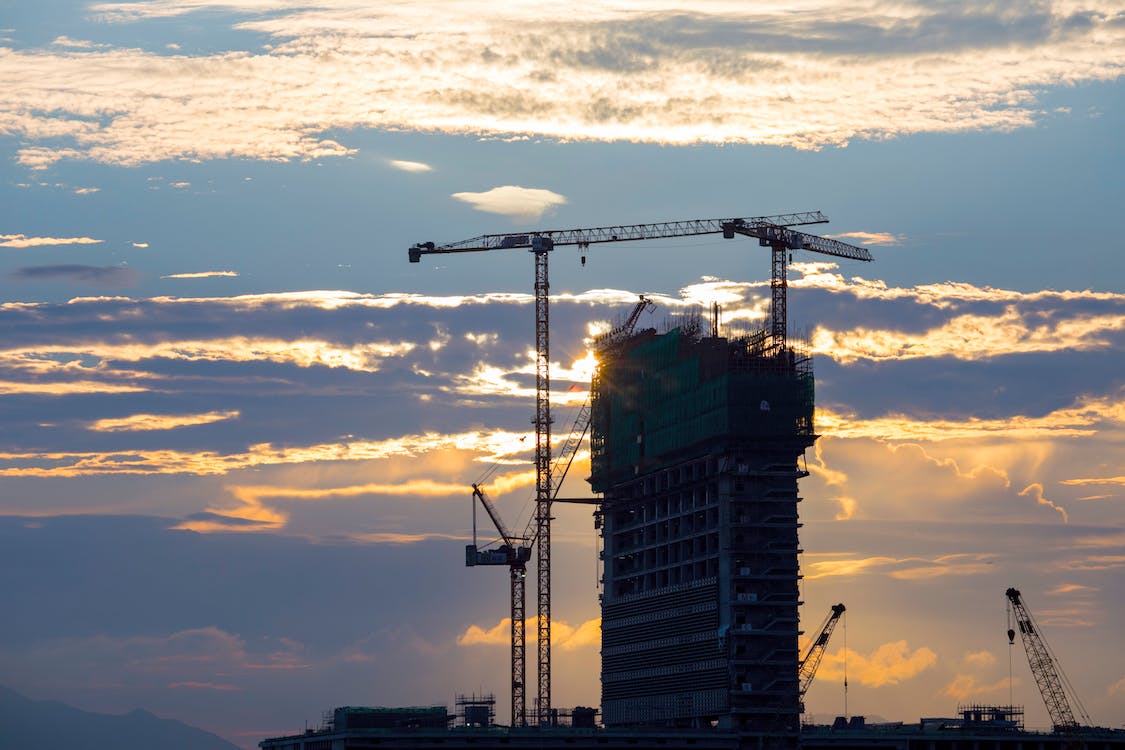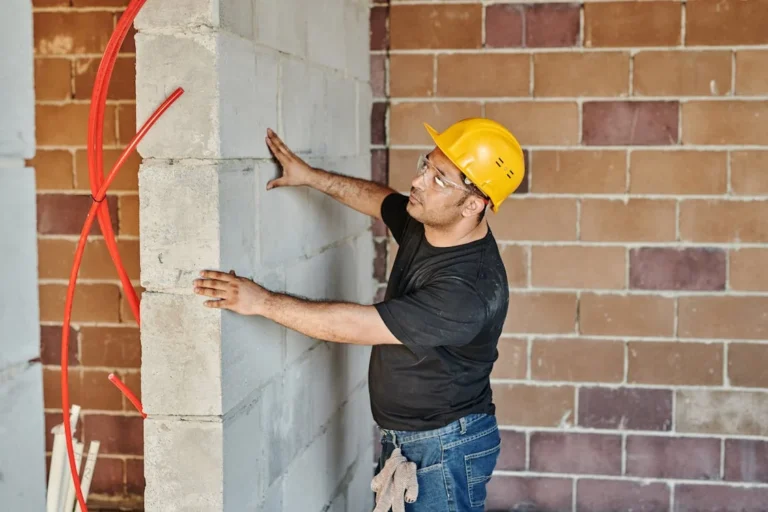The construction industry has witnessed a paradigm shift in recent years, embracing technological advancements that have revolutionised traditional building methods. From the inception of 3D printing to the integration of smart home technologies, these innovations are reshaping the landscape of construction, enhancing efficiency, sustainability, and functionality. This blog will explore the transformative impact of these innovations, delving into how they are shaping the future of construction.

3D Printing in Construction
The implementation of 3D printing in construction marks a revolutionary departure from traditional building techniques. Conventional methodologies often necessitate the assembly of structures in a sequential manner, involving the meticulous placement of individual components. In contrast, 3D printing redefines this process by employing additive manufacturing techniques, where structures are meticulously crafted layer by layer based on digital models.
This transformative approach brings about a myriad of advantages. Firstly, it substantially compresses construction timelines. What might have previously taken weeks or months to build can now be achieved in a fraction of that time. The rapid layer-by-layer deposition of materials through 3D printing streamlines the entire construction process, resulting in faster project completions.
3D printing also significantly curtails material wastage. Unlike conventional construction, where surplus materials often go unused or get discarded, additive manufacturing allows for precise material allocation. This precision minimises excess and optimises resource utilisation, aligning with sustainability goals by reducing the environmental impact associated with construction activities.
Additionally, the advent of 3D printing opens the door to architectural designs that were once considered infeasible. The flexibility of this technology permits the realisation of intricate and innovative designs that push the boundaries of conventional construction. Complex geometries, organic shapes, and custom detailing that were once challenging or prohibitively expensive to execute through traditional means become feasible and even practical with 3D printing. This not only empowers architects to explore new realms of creativity but also offers clients the opportunity to bring their unique, personalised visions to life.
Thus, 3D printing in construction represents a fundamental shift in the way we conceive, design, and build structures. Its ability to expedite construction, minimise waste, and unlock unprecedented design possibilities positions it as a pivotal innovation in the industry, propelling construction into a new era of efficiency, sustainability, and architectural innovation.
Key Advantages:
Speed and Efficiency: 3D printing significantly accelerates the construction process, with some projects completing within days or weeks rather than months.
Cost-Effectiveness: By optimising material usage and reducing labour hours, 3D printing has the potential to lower overall construction costs.
Design Flexibility: Architects and builders can explore innovative designs and complex geometries that were once challenging to execute using traditional methods.
Examples:
Apis Cor’s 3D Printed House: Apis Cor, a construction company, showcased the construction of a 3D printed house in under 24 hours. This feat highlighted the efficiency and potential of this technology.
ICON’s Affordable Housing: ICON utilised 3D printing to create affordable housing solutions, addressing global housing shortages with cost-effective, rapidly deployable structures.
Smart Homes and IoT Integration
The concept of smart homes represents a transformative integration of Internet of Things (IoT) technology into residential spaces, orchestrating an array of interconnected devices and systems aimed at elevating the overall living experience. At its core, the essence of smart homes transcends mere technological convenience; it encapsulates a holistic approach to redefining the way we interact with and perceive our living spaces. By seamlessly merging IoT devices, sensors, and advanced automation, these innovations converge to enhance not just convenience, comfort, security, and energy efficiency but also foster a harmonious and responsive environment tailored to the needs and preferences of its inhabitants.
Through IoT integration, homeowners are bestowed with unprecedented control and insight into their living spaces. This extends far beyond simple remote access; it encompasses the ability to monitor, manage, and fine-tune various facets of the home environment from anywhere in the world. Imagine adjusting the thermostat, dimming lights, or checking security cameras—all through a smartphone app or voice command, enabling a level of convenience and customization that was once confined to the realms of science fiction.
The interconnectedness of devices within a smart home engenders an ecosystem that operates synergistically. Information sharing between devices allows for seamless automation and intelligent decision-making. For instance, a smart thermostat can interact with occupancy sensors to optimise heating or cooling based on room occupancy, thereby conserving energy without compromising comfort. Similarly, smart lighting systems can adjust brightness and colour temperature dynamically to align with daily routines or external lighting conditions, fostering an ambiance that suits the moment or enhances productivity.
Crucially, smart home technologies pivot towards bolstering security and safety. Integrated systems encompass smart locks, surveillance cameras, and motion sensors that not only provide real-time monitoring but also proactively alert homeowners to potential threats or anomalies, fortifying the overall security infrastructure of the household.
The convergence of these technologies doesn’t just cater to immediate needs; it also contributes significantly to energy efficiency and sustainability. Smart homes leverage data analytics and machine learning algorithms to optimise energy consumption patterns. They identify inefficiencies, suggest improvements, and even self-regulate appliances and systems to minimise wastage. From smart appliances that operate during off-peak hours to solar-powered setups that harness renewable energy, these initiatives foster eco-friendly practices within residential spaces.
In essence, the concept of smart homes transcends the mere amalgamation of gadgets; it encapsulates a fundamental shift in how we interact with our living spaces. It’s a testament to the marriage of technology and lifestyle, creating environments that adapt, learn, and evolve alongside the needs and desires of their occupants, ultimately shaping a future where homes aren’t just places to reside but dynamic ecosystems tailored for enhanced living.
Key Innovations:
Home Automation Systems: Smart thermostats, lighting, and security systems controlled via smartphones or voice commands offer convenience and energy savings.
Energy Efficiency: IoT devices monitor energy consumption, optimising usage patterns and reducing waste, leading to eco-friendly homes.
Enhanced Security: Smart cameras, door locks, and alarm systems provide real-time monitoring and alerts, bolstering home security.

Examples:
Nest Thermostat: Nest’s smart thermostat adapts to users’ behaviours, learning and adjusting temperature settings to conserve energy.
Amazon Echo and Google Home: These voice-activated assistants control various smart devices, showcasing the integration potential of IoT in homes.
Sustainability in Construction
The construction industry stands as a crucial player in global environmental impact due to its resource-intensive nature. However, in response to mounting concerns about environmental degradation, the sector is undergoing a profound transformation. Emerging innovations are spearheading a shift towards sustainable construction practices, aiming to recalibrate the industry’s footprint and foster eco-conscious methodologies from inception to completion.
At the heart of this movement lies a concerted effort to minimise resource consumption. Sustainable construction practices prioritise efficiency in material usage, opting for strategies that maximise utility while minimising depletion. This involves embracing methodologies like modular construction, where components are prefabricated off-site, reducing raw material consumption and optimising resource utilisation. Additionally, the incorporation of innovative construction techniques, such as Building Information Modeling (BIM), facilitates meticulous planning and resource allocation, reducing excess and optimising the use of materials.
Moreover, these practices vehemently address the issue of waste generation within the construction lifecycle. Traditionally, construction sites have been notorious generators of waste, from excess materials to demolition debris. Sustainable initiatives are now advocating for a circular approach, promoting recycling and reusing materials wherever feasible. Through deconstruction rather than demolition, structures are disassembled with the intent to salvage materials for repurposing or recycling, diverting substantial volumes of waste from landfills.
Central to sustainable construction is the advocacy for eco-friendly building materials. Traditional construction often relied on materials with high carbon footprints, such as concrete and steel, which significantly contribute to greenhouse gas emissions. However, the landscape is evolving with the advent of alternatives like recycled materials, bamboo, cork, and engineered wood products. Materials are being reimagined and engineered to align with environmental goals, emphasising durability, renewable sourcing, and reduced environmental impact throughout their lifecycle.
Furthermore, sustainable construction practices extend beyond the physical structures themselves. They encompass the integration of energy-efficient designs and renewable energy solutions. Buildings are being conceptualised and constructed with passive design principles that leverage natural lighting, ventilation, and insulation to reduce reliance on artificial heating, cooling, and lighting. Integration of renewable energy sources like solar panels, wind turbines, and geothermal systems further augments sustainability efforts, powering structures with clean, renewable energy.
In conclusion, sustainable construction practices represent a concerted effort to transform an industry historically associated with environmental degradation into a beacon of environmental stewardship. By prioritising resource efficiency, waste reduction, and the adoption of eco-friendly materials and energy solutions, these innovations are driving a fundamental shift towards a construction landscape that not only meets the needs of the present but also safeguards the planet for future generations. This evolving paradigm signifies not just a trend but a necessary evolution toward a more harmonious coexistence between human development and environmental preservation.
Key Elements:
Green Building Materials: Utilisation of recycled materials, sustainable wood, and eco-friendly composites reduces the environmental footprint of construction.
Energy-Efficient Designs: Incorporation of passive design strategies like proper insulation and orientation to maximise natural light and reduce reliance on artificial heating and cooling.
Renewable Energy Integration: Installation of solar panels, wind turbines, and other renewable energy sources to power buildings sustainably.
Examples:
Cross-Laminated Timber (CLT): CLT, a sustainable wood product, is gaining traction as an alternative to concrete and steel due to its strength, durability, and eco-friendly attributes.
LEED-Certified Buildings: Leadership in Energy and Environmental Design (LEED) certification signifies adherence to stringent environmental standards, promoting sustainability in construction projects.
The evolution of construction practices through innovations like 3D printing, smart home technologies, and sustainable practices marks a significant shift in the industry. These advancements not only enhance efficiency and functionality but also contribute to a more sustainable and connected future. Embracing these innovations paves the way for construction practices that are faster, smarter, and more environmentally conscious, reshaping the way we build and inhabit our spaces. As technology continues to advance, the possibilities for further innovation in construction are limitless, promising a future where buildings are not just structures but embodiments of cutting-edge progress and sustainability.
A good construction software makes use of good project management functionality, estimate and financial/accounting tool functionality, job management, scheduling and planning and support functionalities and more. WunderBuild is a construction management software that aims to provide all of these functionalities and more to bring out the best outcomes for a project. Enquire here today, to learn more about Wunderbuild and start your free trial.




